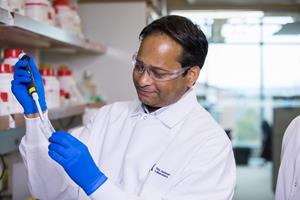How do sleep and social interaction affect addiction?
Innovative AI technology captures mouse sleep and social behaviors for study of their influence on drug intake
Bar Harbor, Maine, July 12, 2019 (GLOBE NEWSWIRE) --It’s long been clear that sleep and social interaction — or lack thereof — influence the use of addictive substances. But existing techniques for measuring sleep behaviors in laboratory mice have failed to replicate that vital social component.
|
|||||||||||||
“Currently available methods for assessing different sleep states are designed to be used with isolated animals,” says Jackson Laboratory (JAX) Assistant Professor Vivek Kumar, “and don’t measure multiple individuals in their normal group setting.” Although social context is known to be an influence on addiction vulnerability, he says, it has been largely studied by changing the housing environment and testing isolated animals.
With a new two-year exploratory grant totaling $467,500 from the National Institute on Drug Abuse, Kumar is developing a highly innovative technology that, for the first time, will allow researchers to continuously and non-invasively monitor complex sleep and social behaviors in groups of mice, using low-cost and easily scaled video equipment.
Kumar is collaborating with prominent sleep researcher Allan I. Pack of the University of Pennsylvania’s Perelman School of Medicine.
“We will exploit techniques of artificial intelligence to develop a neural network-based machine-vision method of video analysis of these behaviors, designed to be used in an ethologically-relevant group setting, over long periods of time,” Kumar explains.
Armed with this detailed behavioral data, addiction researchers will be able to measure the influence of social and sleep behaviors on drug intake behavior in large-scale genomic experiments, to discover genes that regulate vulnerability to addiction.
Kumar will develop his machine-vision method to measure rapid eye movement (REM) sleep, nonREM sleep and waking behaviors in mice. As a proof of concept, he will compare two mouse strains that are known to differ in these sleep parameters, in both group and single housing settings.
The next step will be to extend the method to enable assessment of group social dynamics and to record all social and active behaviors over multiple days. “This will allow us to test the bidirectional effects of social and sleep behaviors with the consumption of self-administered methamphetamine,” Kumar says. “We will assess the effect of initial social status and sleep quality on drug consumption, and also measure how the social interactions and sleep patterns are changed after the drug is available.”
He says the new approach “will be a significant advance in behavioral phenotyping, fulfilling the demands of the high-throughput genetic studies necessary for optimizing the mouse as model of addiction.”
About The Jackson Laboratory
The Jackson Laboratory is an independent, nonprofit biomedical research institution with more than 2,200 employees. Headquartered in Bar Harbor, Maine, it has a National Cancer Institute-designated Cancer Center, a genomic medicine institute in Farmington, Conn., and facilities in Ellsworth, Maine, Sacramento, Calif., and Shanghai, China. Its mission is to discover precise genomic solutions for disease and empower the global biomedical community in the shared quest to improve human health. For more information, please visit www.jax.org.
National Institute on Drug Abuse: Application of machine vision to determine the influence of sleep states and social interactions on vulnerability to drug addiction, Grant Number 1R21DA048634-01
Attachments
Sarah Laskowski The Jackson Labratory 860.837.2102 news@jax.org
Legal Disclaimer:
EIN Presswire provides this news content "as is" without warranty of any kind. We do not accept any responsibility or liability for the accuracy, content, images, videos, licenses, completeness, legality, or reliability of the information contained in this article. If you have any complaints or copyright issues related to this article, kindly contact the author above.




